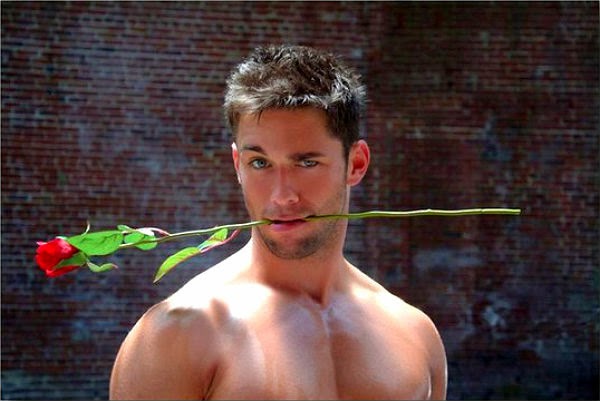Challenging the Notion of ‘Gaydar’: Is Assuming Someone’s Sexual Orientation Harmful Stereotyping?
Written by gaymennews • April 24, 2024

The concept of “Gaydar” has long been a topic of debate in the LGBTQ+ community. While some see it as harmless, relying on assumptions about sexual orientation can perpetuate harmful stereotypes and lead to misunderstandings. 📢 Let’s challenge these notions and promote empathy, understanding, and acceptance for all! 🌈💖 #Gaydar #LGBTQplus #PrideMonth #LoveIsLove #EmpathyMatters
In the LGBTQ+ community and popular culture, the concept of “Gaydar”—the supposed ability to intuitively identify someone’s sexual orientation based on mannerisms, appearance, or behavior—has long been a topic of discussion and debate. While some view it as a harmless way of navigating social interactions, others argue that relying on assumptions about someone’s sexual orientation can perpetuate harmful stereotypes and lead to misunderstandings. In this post, we’ll explore the implications of relying on “Gaydar” and challenge the notion that assuming someone’s sexual orientation is a reliable or appropriate way to understand them.
The Cultural Significance of “Gaydar”
The term “Gaydar” has its origins in LGBTQ+ communities, where it was often used as a way to identify and connect with other queer individuals in a society that was largely hostile to non-heterosexual identities. Over time, the concept has gained wider cultural significance, appearing in movies, TV shows, and popular discourse. For many gay men, the idea of having a “Gaydar” is seen as a badge of honor—a way of demonstrating one’s connection to and understanding of queer culture.
However, the cultural significance of “Gaydar” is not without its problems. By relying on assumptions about someone’s sexual orientation based on stereotypes and superficial cues, we risk reducing complex individuals to a single aspect of their identity. Moreover, the very notion of “Gaydar” can perpetuate the idea that there is a “right” or “wrong” way to be gay, leading to exclusion and discrimination within the LGBTQ+ community itself.
The Problem with Relying on “Gaydar”
Despite its cultural significance, the reality is that relying on “Gaydar” is often inaccurate and can lead to harmful stereotyping. Research has shown that people’s ability to accurately identify someone’s sexual orientation based on appearance or behavior is little better than chance. In fact, studies have found that people often rely on stereotypes and cultural assumptions when making judgments about someone’s sexual orientation, rather than any innate ability to detect queerness.
Moreover, the impact of misjudging someone’s sexual orientation can be significant. For individuals who are questioning their sexuality or who do not conform to traditional gender norms, being assumed to be gay based on superficial cues can be deeply hurtful and alienating. It can also lead to discrimination and harassment, particularly in environments where being LGBTQ+ is stigmatized or marginalized.

Promoting Understanding and Challenging Assumptions
So, how can we move beyond the limitations of “Gaydar” and promote a more nuanced understanding of sexual orientation and identity? One key step is to recognize the incredible diversity of LGBTQ+ experiences and expressions. Being gay, lesbian, bisexual, or transgender is not a monolith, and there is no one “right” way to express or embody queerness.
Moreover, it’s important to recognize that sexual orientation is just one aspect of a person’s identity, and that it intersects with other factors such as race, gender, class, and ability. By taking an intersectional approach and acknowledging the complexity of people’s lives and experiences, we can move beyond simplistic assumptions and stereotypes.
Ultimately, the key to challenging the notion of “Gaydar” is to approach others with empathy, open-mindedness, and respect. Rather than making assumptions about someone’s sexual orientation based on superficial cues, we should strive to create a culture of acceptance and understanding, where people feel comfortable expressing their authentic selves without fear of judgment or discrimination.
The Role of Media and Education
Of course, challenging deeply ingrained cultural assumptions is no easy task, and it requires a concerted effort from all of us. One important factor is the role of media representation in shaping perceptions of LGBTQ+ individuals. For too long, media portrayals of gay men have relied on stereotypes and caricatures, perpetuating the idea that there is a “right” way to be gay. By demanding more diverse and nuanced representation, we can help to challenge these assumptions and promote a more accurate understanding of the LGBTQ+ experience.
Education and awareness are also crucial tools in the fight against stereotyping and discrimination. By teaching young people about the diversity of sexual orientations and gender identities, and by promoting empathy and understanding, we can help to create a more inclusive and accepting society for all.
Personal Reflections and Experiences
For many gay men, the experience of being judged or assumed to be a certain way based on stereotypes is all too familiar. Whether it’s being told that we don’t “seem gay” because we don’t fit a certain mold, or being subjected to harassment and discrimination based on our perceived sexual orientation, the impact of these assumptions can be deeply hurtful and alienating.
As someone who has experienced this firsthand, I know how important it is to challenge these assumptions and to promote a more nuanced understanding of identity. By sharing our stories and experiences, and by calling out stereotyping and discrimination when we see it, we can help to create a more inclusive and accepting world for all LGBTQ+ people.
Conclusion
Ultimately, challenging the notion of “Gaydar” is about more than just debunking a popular myth. It’s about recognizing the incredible diversity and complexity of human identity, and about striving to create a world where everyone feels seen, valued, and accepted for who they are.
By rejecting harmful stereotypes and assumptions, and by approaching others with empathy and respect, we can help to build a more inclusive and equitable society for all. So let us all commit to challenging our own assumptions, to listening to and learning from the experiences of others, and to working towards a world where everyone can live authentically and without fear of judgment or discrimination.




